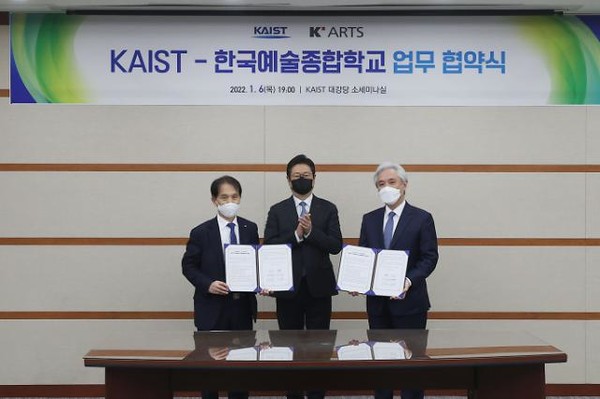After KAIST signed a business agreement for mutual exchange with Korea National University of Arts (KNUA) this January, the first inter-school program “KAIST x KNUA Freshman Video Camp” began on February 14 and lasted for eight days. The purpose of the program was to foster the interaction between the students from both schools and the fusion of art and technology, which is part of President Lee’s “QAIST” strategy. The behind the scenes of the student's working process and their interviews was released on Youtube on March 18.

34 freshmen from each university were divided into five teams for filmmaking and six teams for creating games, and took lectures on film, editing, sound, computer graphics, directing, and planning as well as technical classes to learn how to use filming cameras, equipment and game tools. Based on the 49 hours of lectures, students were asked to create a short movie or a simple game. Some of the students’ examples include a horror movie where a bullied student takes revenge on the bullies and mini games with an adventure theme using the program Bitsy.
The camp was a great success, receiving positive feedback from the students. Jaewoong Jeong, a freshman at KAIST, stated that the camp allowed him to make friends from different backgrounds, which will inspire him in other fields later on in his career. Yeonsu Shin, majoring in film at KNUA, mentioned that while it is easy for students at both KAIST and KNUA to get caught up in a set path as they consist of students on very specific paths, the camp allowed him to think out of his frame and see things from various perspectives.
Based on the success of this video camp, the two schools plan to hold a video camp every year for freshmen and also provide opportunities for upperclassmen to participate. Byungha Shin, the Dean of Student Life at KAIST, stated, “In order for KAIST to take a step forward as a top-notch university, it is necessary to also develop humanities and artistic literacy rather than focusing solely on science and technology, and to make efforts to combine the two fields.” Hence, the exchange between KNUA is expected to continue in more diverse ways.

